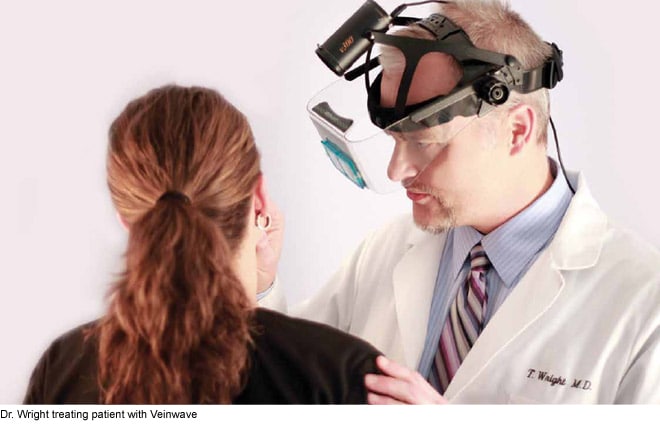
THOMAS WRIGHT, M.D., FACP, Medical Director of Laser Lipo & Vein Center in St. Louis, MO, was one of the first 200-plus surgeons in the nation to become board certified in phlebology by the American Board of Phlebology. Dr. Wright attended Duke University for his undergraduate degree and earned his medical degree from the University of Missouri in Columbia, MO. Dr. Wright completed his residency at the University of Alabama at Birmingham.
His professional affiliations include the American College of Phlebology, the American Medical Association, the American Society of Laser Medicine and Surgery, the Missouri State Medical Association, the American Academy of Cosmetic Surgery and the American Registry for Diagnostic Medical Sonography.
Dr. Wright has authored and presented several scientific papers on surgical techniques in the treatment of venous insufficiency.
Venous Insufficiency and Lower-Extremity Edema
Venous hypertension is the most common cause of tissue edema in the lower extremity, and the most common cause of venous hypertension is venous reflux. Congestive heart failure is a distant second. The edema in the legs caused by venous insufficiency is often worse in one leg and often involves less fluid accumulation than the edema caused by heart failure. However, venous hypertension also affects the lymphatic drainage and can lead to massive lower-leg edema (veno-lymphedema). Despite the significantly greater prevalence of primary venous insufficiency, it is often not considered even after cardiac, hepatic and renal problems have been ruled out as the cause of the edema.
Before committing a patient with restless legs syndrome to possible life-long medication with potential side effects, venous insufficiency should be checked as a possible cause, as correction of the vein reflux provides long-term and likely permanent relief.
Venous Insufficiency and Restless Legs Syndrome
Restless legs syndrome is believed to be associated with a number of factors, including iron deficiency, peripheral neuropathy, Parkinson’s disease and other neurological disorders. Recent medical research reported in the journal Dermatologic Surgery, showed that 22% of patients with restless legs syndrome also have venous insufficiency as revealed through Doppler examination. “Symptoms of restless legs syndrome include burning and tingling sensations and the uncontrollable urge to move the legs,which is worse at night when laying down and is relieved by movement or walking,” says Dr. Wright. “There is a great overlap in the symptoms of vein disease and restless legs syndrome. As the two conditions have similar presentations, it’s important to consider both the vascular and neurological concerns.”
Studies show that the treatment of venous insufficiency can relieve symptoms of restless leg syndrome. According to a study in the journal Phlebology, in patients with restless leg syndrome and venous insufficiency, 98% of patients experienced relief from restless legs syndrome symptoms by treating their venous insufficiency, and 80% had long-term relief.
Before committing a patient with restless legs syndrome to possible life-long medication with potential side effects, venous insufficiency should be checked as a possible cause, as correction of the vein reflux provides long-term and likely permanent relief.
